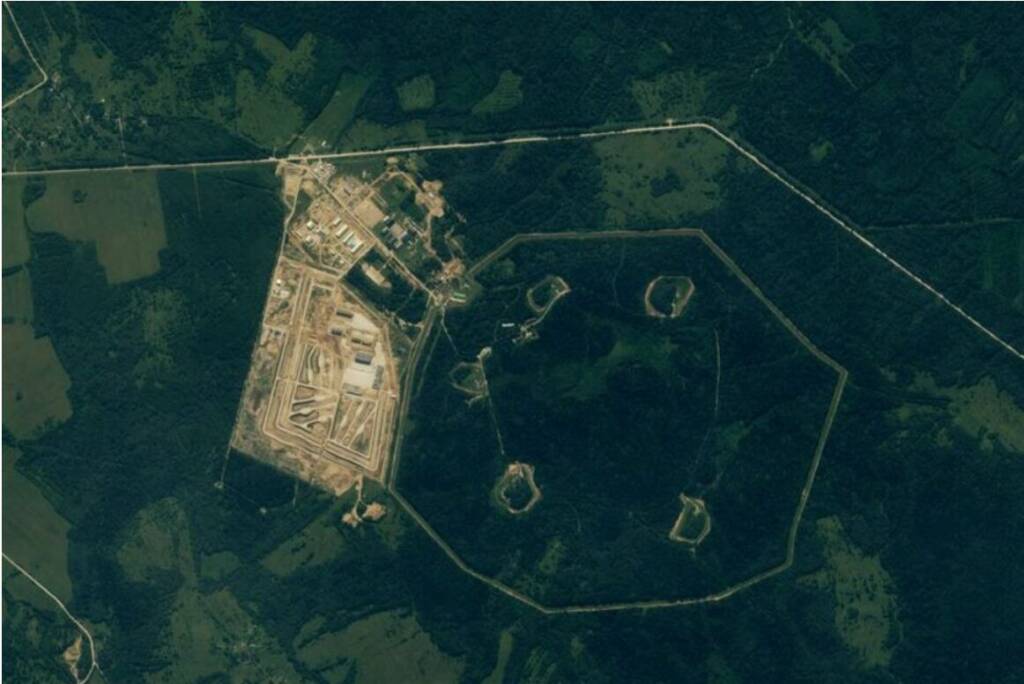Recent analysis by U.S. researchers suggests that Russia’s new nuclear-powered cruise missile, the 9M370 Burevestnik—referred to as SSC-X-9 Skyfall by NATO—has a probable deployment site. The missile, touted by President Vladimir Putin as “invincible,” has been identified at a construction site near Vologda-20, a nuclear warhead storage facility located about 295 miles (475 km) north of Moscow.
The Burevestnik, which Putin claims has almost unlimited range and can evade U.S. missile defenses, has faced skepticism from Western experts. They argue that the missile may not offer significant new capabilities and poses risks due to its potential for radioactive contamination.
Satellite images from July 26, provided by Planet Labs, reveal nine horizontal launch pads under construction at the site. These pads are grouped within high berms designed to protect them from attacks or accidental detonations. The berms connect to facilities likely intended for missile servicing and storage.
Decker Eveleth of the CNA research organization and Jeffery Lewis of the Middlebury Institute of International Studies, who analyzed the images, believe this site is intended for the Burevestnik. However, Hans Kristensen of the Federation of American Scientists noted that while the imagery suggests a missile-related facility, definitive identification remains challenging due to the usual separation of missile launchers and nuclear warhead storage in Russian practices.
The Burevestnik’s deployment suggests Russia is moving forward despite a problematic test record. Since 2016, the missile has undergone at least 13 known tests, with only two partial successes, according to the Nuclear Threat Initiative (NTI). A 2019 test resulted in a catastrophic explosion during a recovery operation, leading to a year-long smoldering of an unshielded nuclear reactor on the White Sea floor.
While Putin has presented the Burevestnik as a groundbreaking weapon, experts express doubts about its practical value. The missile’s potential for radiological hazards and its design challenges have led some to label it as a “political weapon,” intended more to enhance Putin’s image than to provide a strategic advantage. The Burevestnik’s capabilities, including its subsonic speed and detectable flight path, further undermine its perceived invincibility.
As the Burevestnik’s deployment progresses, it remains unclear how this development will impact future arms control negotiations, particularly in light of the impending expiration of the New START treaty in February 2026. Some experts suggest that Russia might use the missile as leverage in future discussions or as a political tool to assert its stance on global security issues.
